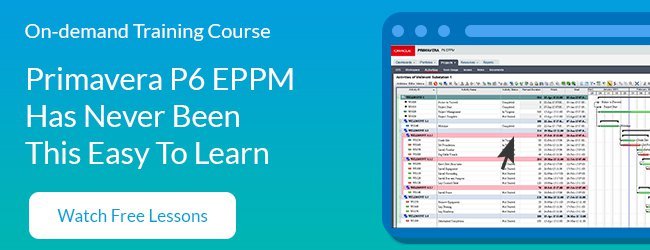Everyone assumes P6 EPPM is a web-based replacement for P6 Professional. And perhaps that’s what they were told by marketing, but since P6 EPPM’s release, it’s been pretty clear to some that P6 EPPM cannot do what Primavera P6 Professional can do.
And vice versa – P6 EPPM excels at some processes that P6 Professional can’t dream of doing.
P6 Professional users who have experimented with replacing their beloved windows-based planning tool with P6 EPPM have been sadly disappointed – and more often, very frustrated. Many have reported reverting to P6 Professional, abandoning attempts to squeeze value out of P6 EPPM.
The problem we have is not entirely the software. It’s more likely what we’ve been told about the software and what it will do.
Maybe you’ve heard that P6 EPPM is a web-based version of P6 Professional. Maybe we all just assumed.
But let me take you on a deep-dive of how to best leverage both of these tools.
Primavera P6 EPPM is not a replacement for Primavera P6 Professional
Organizations from all industries that are serious about implemented project management software are coming at the problem from differing maturity levels.
All companies are at different maturities levels in their project management capabilities. Yes, there are plenty of models about project management maturity out there, like PMI’s OPM3 or PM Solutions’ PMMM. So I’ve tried to keep it simple and mashed this graphic together to represent a simplified project management maturity model.
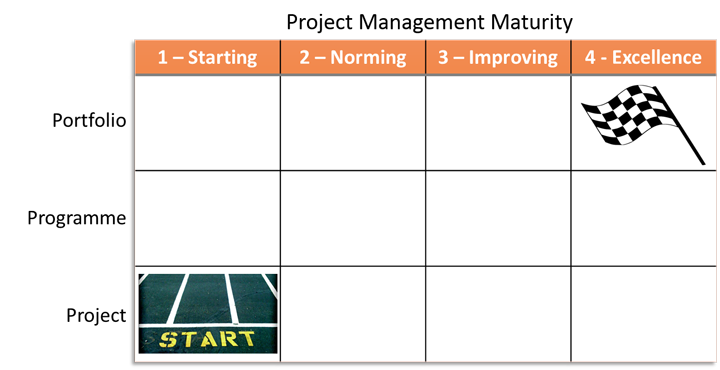
The idea is that you start in the bottom left and as your organization matures, you’ll find yourself in the top-right cheering on your excellence in Porfolio Management.
Does this model fit for every organization? It’s pretty clear that it doesn’t. Many contract companies move from project to project and may never engage in Programme or Portfolio Management. Others will implement PMOs and standards like ISO 21504.
Where does Primavera P6 Professional fit in the Project Management Maturity Model?
Primavera P6 Professional has a lot going for it. Let’s consider, for example, P6 Professional’s capabilities:
- excels at managing individual projects
- is an Enterprise project management tool
- has Programme capabilities (users can manage inter-related projects as part of a wider programme)
- manages Enterprise resources.
…and much more. But it is missing the rich Portfolio Management tools that you find in Primavera P6 EPPM. So here’s how it fits in the maturity model.
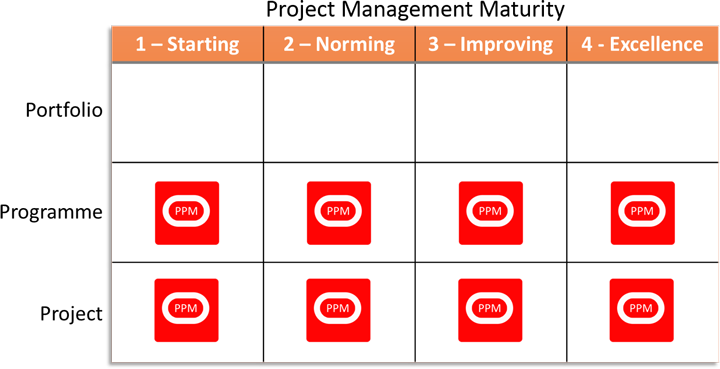
Primavera P6 Professional is a very strong project and programme management tool. That’s what it does, that’s why companies purchase it and manage billions of dollars in projects using the software.
Could you manage a Portfolio using P6 Professional? Sure you could. But it might not be your first choice in solutions.
So, where does Primavera P6 EPPM fit in the Project Management Maturity Model?
I think Oracle Primavera took on too much when they introduced P6 EPPM.
I know what they were thinking – the world wants an enterprise project management tool and it’s got to be a web-tool. Everything is web these days. But they underestimated just how entrenched Primavera P6 Professional was and how well it served its users. Consequently they put everything in EPPM – just look at the name! – Primavera P6 Enterprise Project Portfolio Management…no one can remember this!
So Primavera P6 EPPM has all sorts of functionality:
- strong Portfolio Management
- Enterprise dashboards
- Portfolio dashboards
- a future project selection tool
- ability to manage individual projects
- ability to manage programmes
- Enterprise Resource Management
…and more as well. P6 EPPM does all of these things, but it has faults. The basic managing of projects is not what it does best. The interface is too slow and the ability to keep up with P6 Professional’s 100,000 activity limit isn’t here offering a lesser project & programme management experience for the user.
However, the Portfolio Management piece is very well done. Most prospects look at the Portfolio Management graphs and drool. They also love the Project Selection filtering. So here’s how P6 EPPM fits into our maturity model.
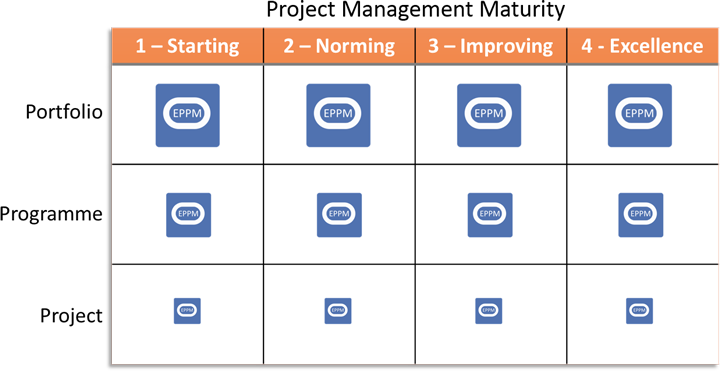 Complimenting Each Other
Complimenting Each Other
When you purchase P6 EPPM you do have the option of using BOTH tools to connect to the same database. The P6 Professional version that ships with P6 EPPM is sometimes called the “optional windows client.”
When you use both P6 EPPM and P6 Professional together, in a role-based environment for Project and Portfolio Management, you can benefit from a suite of tools that have full capabilities.
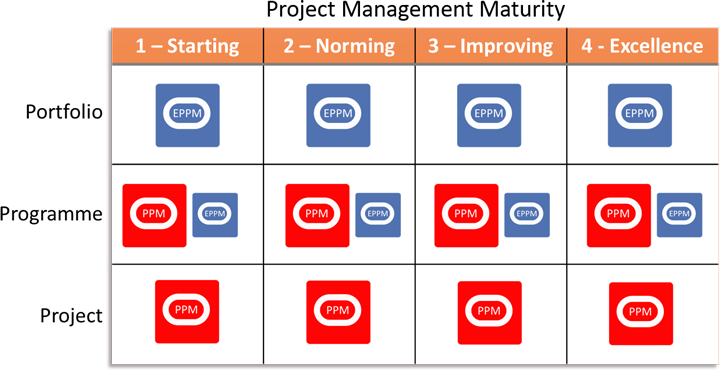
Not A Match

Oracle loves to sell clients the whole P6 EPPM suite, but in many cases it’s more software than an organization needs based on where they sit in terms of project management maturity.
I’ve seen many SMB clients who simply need a scheduling tool to manage 5-10 projects end up with a Porfolio Management tool they didn’t want and over-complexity they don’t need.
For those in this situation, I advocate to use the P6 software you need to meet your deadlines, and then to look at the rest of the suite later – maybe in a year or even two or three.
Conclusion
I don’t work for Oracle – I work for my readers (you) and my training clients (love you guys!). I put this article together to try to ease some of the frustration out there with P6 EPPM. I think P6 EPPM is a strong tool, and it’s not without it’s shortcomings, like any software. But as a Portfolio Management tool, it’s a strong offering in a limited marketplace.
Not every company can take advantage of the full Primavera P6 EPPM suite today. But the project management trend is not slowing and if they can’t today, it won’t be long until they can.
How did I do? What did I leave out or miss in this article? Let me know in the comments.
—-


